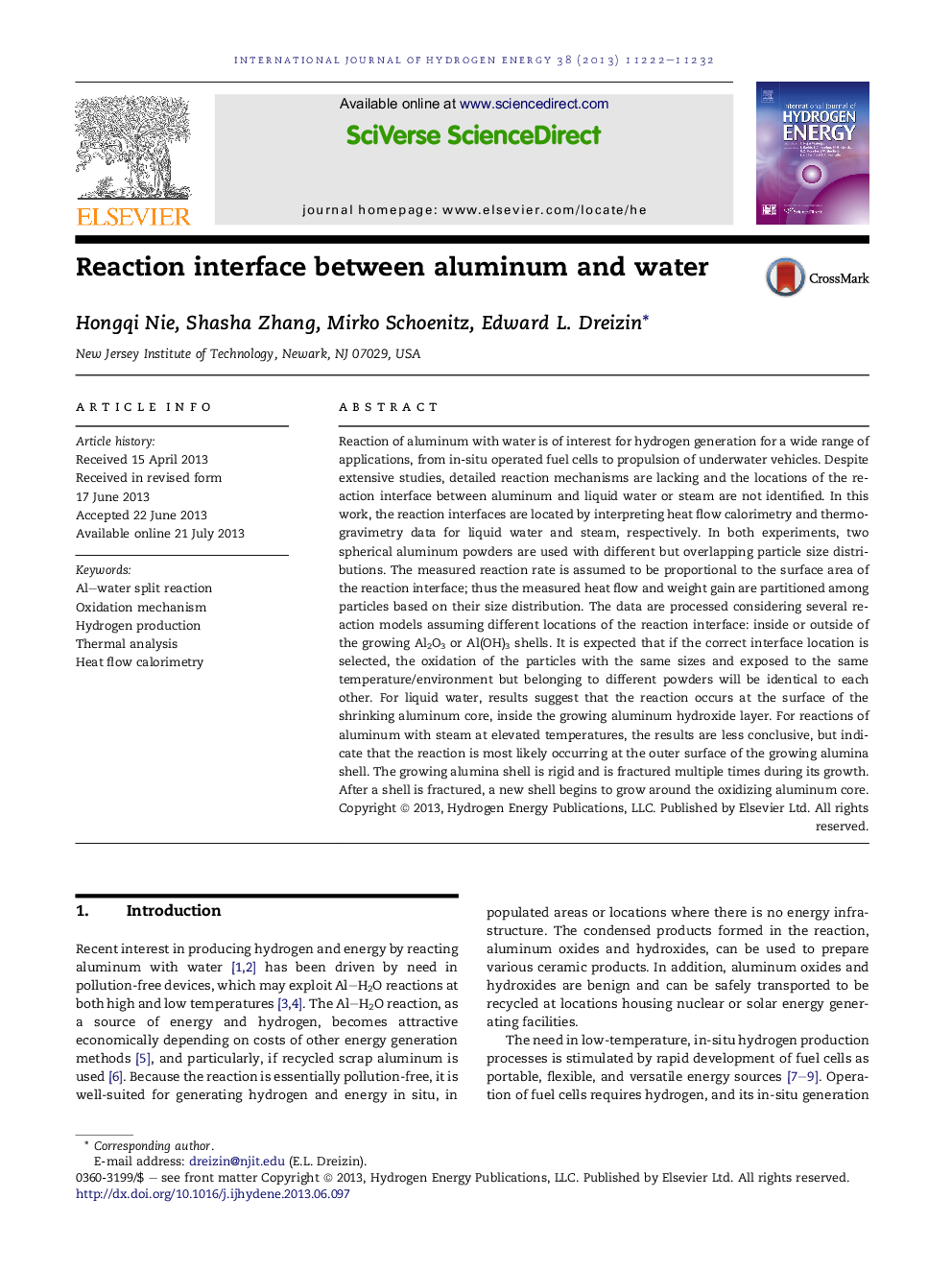| Article ID | Journal | Published Year | Pages | File Type |
|---|---|---|---|---|
| 7721745 | International Journal of Hydrogen Energy | 2013 | 11 Pages |
Abstract
Reaction of aluminum with water is of interest for hydrogen generation for a wide range of applications, from in-situ operated fuel cells to propulsion of underwater vehicles. Despite extensive studies, detailed reaction mechanisms are lacking and the locations of the reaction interface between aluminum and liquid water or steam are not identified. In this work, the reaction interfaces are located by interpreting heat flow calorimetry and thermo-gravimetry data for liquid water and steam, respectively. In both experiments, two spherical aluminum powders are used with different but overlapping particle size distributions. The measured reaction rate is assumed to be proportional to the surface area of the reaction interface; thus the measured heat flow and weight gain are partitioned among particles based on their size distribution. The data are processed considering several reaction models assuming different locations of the reaction interface: inside or outside of the growing Al2O3 or Al(OH)3 shells. It is expected that if the correct interface location is selected, the oxidation of the particles with the same sizes and exposed to the same temperature/environment but belonging to different powders will be identical to each other. For liquid water, results suggest that the reaction occurs at the surface of the shrinking aluminum core, inside the growing aluminum hydroxide layer. For reactions of aluminum with steam at elevated temperatures, the results are less conclusive, but indicate that the reaction is most likely occurring at the outer surface of the growing alumina shell. The growing alumina shell is rigid and is fractured multiple times during its growth. After a shell is fractured, a new shell begins to grow around the oxidizing aluminum core.
Related Topics
Physical Sciences and Engineering
Chemistry
Electrochemistry
Authors
Hongqi Nie, Shasha Zhang, Mirko Schoenitz, Edward L. Dreizin,
